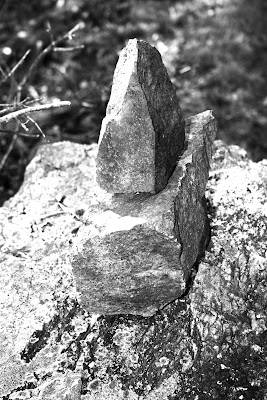

The Pentecost feast is the climax of the Easter-Pentecost Season. On this day, Christians celebrate the redemptive act in its entirety—from Christ’s death, resurrection and ascension to the sending of the Holy Spirit to empower our ministry and cultivate our relationship with God.[1] This day is an expression of the Joy embodied on Easter Sunday and through Eastertide. Like the Jewish understanding of the covenant of Redemption as a process of participation, to be passed on from one generation to the next[2], Eastertide and Pentecost are celebrations of the human relationship with Jesus Christ. As Brown points out, those who come together for worship enter into a relationship of unity[3] (which, by definition, is inclusive), with all generations of all people.
As Brown stated just a few pages earlier, “Baptism is a public action.”[4] Thus Salvation is collective process; unless we come together as human beings, committing ourselves to each other on an individual and collective level, we cannot know God. As Gilbert Meilaender writes (I’ve quoted it elsewhere, I know.): “to give ourselves to no one and no place in particular is not to be more like God; it is just to fail as a human being.”[5] If the Pentecost feast is a time to rejoice in our relationship with God, it is also a time to celebrate our humanity, to be grateful for this life we have been given and to do what we can to live well, thus turning toward (rather than away from) God.
Aside from the festive meals and bright colors on Pentecost, I would suggest an atmosphere of play. Through play, we develop relations and begin to see each other more fully. Tension is released and joy is found. Play moves beyond, and somehow transcends the tensions between suffering and happiness, between dark and light. It cuts through to what is most intimate, and to what is, most essentially, human.
Another part of Eastertide and Pentecost is the pure physicality of these springs and summer months. In Lent, we have been hibernating, as Persephone deep within the Underworld, or Jesus in the tomb. In “leaving the tomb,” or in returning from the underworld, we must step outside of ourselves and back into the world, working passionately to cultivate the seeds sown in late winter, to plant the gardens planned during Lent. This is physical work, our bodies breathing in light and sweating out toxins. In cultivating our gardens, we revel in pleasure, in the bloom, in beauty and fragrance. We engage in the community, sharing our abundance with others and participating in communal life. We cook feasts with fresh harvest, inviting neighbors to share meals over laughter; we sing songs around fire pits and tell stories on back porches filled with moonlight.
*
“…When we’re in relation, whether it is with a human being with an animal, or with the desert [or God?], I think there is an exchange of the erotic impulse. We are engaged, we are vulnerable, we are both giving and receiving, we are fully present in that moment, and we are able to heighten out capacity for passion which I think is the full range of emotion, both joy and sorrow that one feels when in wild country.” [Perhaps God is wild country, no?]
[1] Handbook 235
[2] Greenberg 68-70
[3] Brown 285
[4] Brown 281
[5] Meilaender, 18: Meilaender, Gilbert. 1997. “Creatures of Place and Time: Reflections on Moving.” First Things, April: 17-23.




























